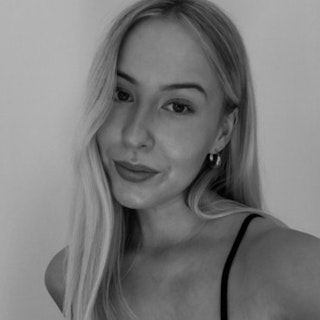Women’s fandom and equality in sport: The Collective on the gaps that need closing
The Drum speaks to The Collective’s Thayer Lavielle about how brands and athletes can fuel gender equity with authentic partnerships.

Top-down: The Collective works to drive fan engagement in women's sport in order for brands in the space to grow. / Andrea Tummons via Unsplash
As executive vice-president for The Collective, sports marketing giant Wasserman's business division for women in music and sport, Thayer Lavielle works with women’s sports teams and leagues to help fans realize their value – and grow brands in the space. "When you’re a women’s team and you’re up against 50 years of men’s sport, of course you’re going to be behind the 8-ball – just like any new startup”, she says.
By leveraging its relationships with athletes, The Collective studies the way superstar athletes grow affinity with fans. As Lavielle says, “women athletes who have been in the space for years are, all of a sudden, getting more engagement. It’s a cycle that begets itself; if more people are exposed to it, more people will watch it”.
Advertisement
The power of women’s fandom: cause and impact
In the arena of sport, it’s the fans who hold all the power. Since brands in the space need to make money, this usually means selling merchandise. Likewise, when it comes to driving engagement between women and sport, in Lavielle’s opinion fandom is the biggest factor.
This is particularly true for Gen Z women, who are more likely to invest in brands with long-term impact plans. Marketers, she says, haven't been paying enough attention to who women are as sports fans. If they’re expected to own 75% of discretionary spend by 2028, you might expect to see serious consideration across the industry for women as consumers. But there is a clear disparity where the sport is concerned – and if that’s the case, Lavielle says, “couldn’t we dive into ‘her’, the consumer, a little more?”
Fan engagement is crucial and informs a rationale for how The Collective aids campaigns and unique collaborations, which can help younger merch designers and media companies in the space to get started. “88% of survey respondents of a custom study we did said they would watch more women’s football if it was more accessible, both in-person and on television,” says Laveille. It is Lavielle’s thinking that if more women are watching sport, more of them will go to the games; and more of them will buy the merchandise.
Advertisement
Research & insight: helping sports brands to effectively move the needle
The role of The Collective, says Laveille, is to help brands to do work that contributes to the gender equity conversation in a way that doesn’t feel performative.
It’s a minefield many brands are now tasked with navigating: “you have a young female consumer who wants what she wants because she’s used to having it algorithmically served to her; she wants it to be interesting content; she wants to feel like it’s made for her, but maybe also inclusive of the groups that she likes; she also likes to think there’s a higher cause to what you’re offering. That’s a lot for, say, a mayonnaise brand to get their arms around, right?”
To bridge that gap, The Collective operates its own research hub, Think Tank. It’s built on data on women in sports and music, populated by professors and students. It aims to illuminate what is going on for the broader industry – such as the future value of a woman athlete. The agency also runs The Collective Marketplace, which enables women athletes to take advantage of their own legacy, by going online and buying and selling memorabilia.
If organizations can help to close this gap, while measuring and driving forward gender equity, it will arguably feel less mysterious. It’s a holistic endeavor; it’s about the people working at the clubs, in the media booth, and selling merchandise – not just the people on the pitch.
Content created with:

Wasserman
Wasserman is a global sports, entertainment, and lifestyle marketing agency with expertise in creating connections between brands, properties, talent, and consu...
Find out more
